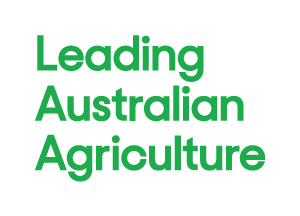Despite global climate extremes such as cyclones, droughts, fires and floods impacting on agricultural production at home and around the world during the past six months, Australia will produce one of the largest winter crops on record, with a 38 million tonne harvest boosting the gross value of agricultural production to $37 billion in 2005-06 the National Farmers’ Federation (NFF) said today.
However NFF Farm Business and Economics Committee Chair, Mr Charles Burke said that farm commodity prices were failing to lift along with other commodities, with the Westpac NFF Rural Commodity Index released today, steady over December and January, down 0.1 per cent.
“It is frustrating that despite our farmers beating the odds and managing to harvest one of the best crops ever this year, rural commodity prices remain generally flat. This should be a year that many farmers consolidate their financial position to help them through the tougher times, but with the combination of soaring input costs and flat prices, farm returns are actually going to fall 8 per cent in 2005-06 when compared to 2004-05,” Mr Burke said.
“Over the past six months we have seen two major US cyclones, the driest weather in recorded history in Texas and cold conditions in the Ukraine and Russia all affecting global production. At home, floods, fires and scorching temperatures in inland Australia have tested our farming ability to the limit.”
However, Mr Burke said that optimism was returning to Australian canegrowers after sugar prices increased a massive 32 per cent over December/January. Wool prices also have turned around from record lows.
“Sugar prices have gone from strength to strength as more of the Brazilian crush is diverted to ethanol production to beat the cost of oil and as sales of flex-fuel cars boom. Planned cutbacks to production in Europe and crop damage in the wake of two cyclones, in the US have also been positive factors on sugar prices.
“Wool prices almost couldn’t get a better start to the year with prices rising 3.5 per cent in January as overseas buyers start to recognise that the market may have bottomed out towards the end of 2005,” Mr Burke said.
Westpac Banking Senior Economist, Mr Justin Smirk said that the Westpac NFF Rural Commodity Index had been expanded to now incorporate dairy prices.
“Dairy is a growing sector of the economy with a gross value of $3.4 billion and exports worth $2.6 billion in 2005-06. The addition of dairy prices to the index is in recognition of the important contribution dairy makes to Australia’s rural commodity exports,” said Mr Smirk.
The Westpac NFF Index is weighted according to the value of Australian agricultural exports and includes only rural commodities – unlike other price indices that are overshadowed by oil, mineral and energy prices. It provides daily movements based on prices of Australia’s seven key farm exports – wheat, barley, beef, wool, cotton, sugar and canola – in both $US and $A.





Add comment